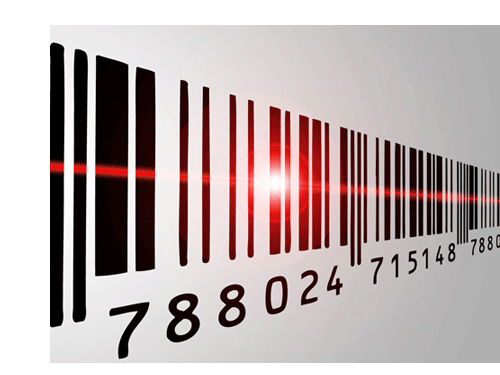
The History of the Barcode
In 2019, the ubiquitous barcode celebrated its 70th birthday. Since its inception, it has been put to use in numerous ways. Would you believe that it all started on a beach?
The Beginning
In 1949 Joseph Woodland, a mechanical engineer from Drexel University, drew a set of parallel lines in the sand that mimicked the dots and dashes of Morse code. He had been considering the ways that Morse code could be used to help solve a problem that a colleague had brought to him. The owners of a local grocery store chain had asked the university to help devise a system that would automate the grocery checkout process.
In October, 1949, Woodland and his colleague filed a patent application for a “Classifying Apparatus and Method” — the very first barcode concept.
The Technology
It remained a concept for a number of years because the scanning technology required to read the barcodes did not exist at that time. Over the next decade, however, that technology was eventually developed and allowed barcodes to be put to use.
Once the hiccups in the scanning technology were ironed out, a small research team at the Radio Corporation of America (RCA) began looking at a few new projects involving barcode technology. This time, however, printing the bull’s-eye bar code proved to be one of the greatest difficulties, because any imperfections would make the whole system unworkable. This challenge, too, was met and overcome.
During the late 1950s and 1960s, some industries foresaw the potential in barcode technology and continued to develop it for their own use. The first successful implementation was developed for the Boston and Maine Railroad company. It was eventually designated as the industry standard by the Association of American Railroads (AAR). By 1974, almost the entire AAR fleet was labeled with the barcodes. (However, after a few years the AAR considered barcode technology inefficient for their particular use and it was discontinued by the late 1970s.)
Standardization
Many manufacturers were resistant to the idea of a universal code because they already had their own methods of identification of products, and worried that they would have to be discarded. Cardboard manufacturers worried that a printed code would deface packaging design. Canners also resisted the idea of including bar codes on the base of cans. It took years to arrive at a workable proposition to put to the whole industry.
 Barcode technology was eventually put to use globally, thanks to the development of the Universal Product Code (UPC). In 1966, the National Association of Food Chains (NAFC), who owned the rights to Woodland’s patent, began to explore the idea of automated checkout systems.
Barcode technology was eventually put to use globally, thanks to the development of the Universal Product Code (UPC). In 1966, the National Association of Food Chains (NAFC), who owned the rights to Woodland’s patent, began to explore the idea of automated checkout systems.
In the 1970’s, the NAFC established a Uniform Grocery Product Code committee that created basic guidelines for an effective coding system. This led to the creation of the standardized 11-digit code to identify any product that is still in use today.
Technology giant IBM became involved when an employee named George Lauer began to develop what would become the standard “UPC linear 1D” barcode. On June 26th, 1974, the first 1D barcode was scanned in a supermarket in Troy, Ohio. It was on a 10-pack of Wrigley’s Juicy Fruit gum.
Today, barcodes help people track everything from a can of beer to top secret assets in the Department of Defense. In 1992, President George HW Bush presented Joseph Woodland with a National Medal of Technology.
Return to the Tech Trends Newsletter
